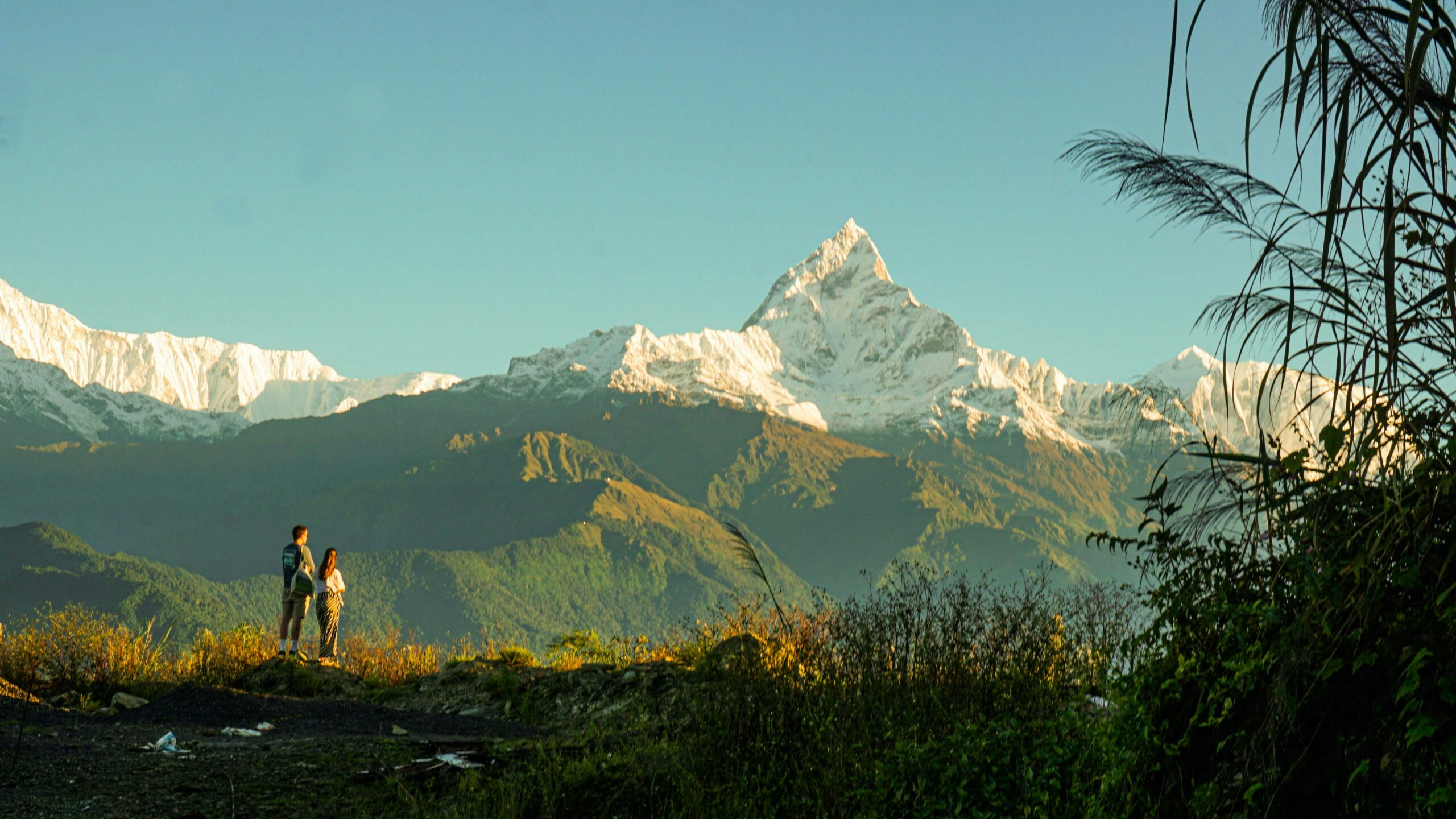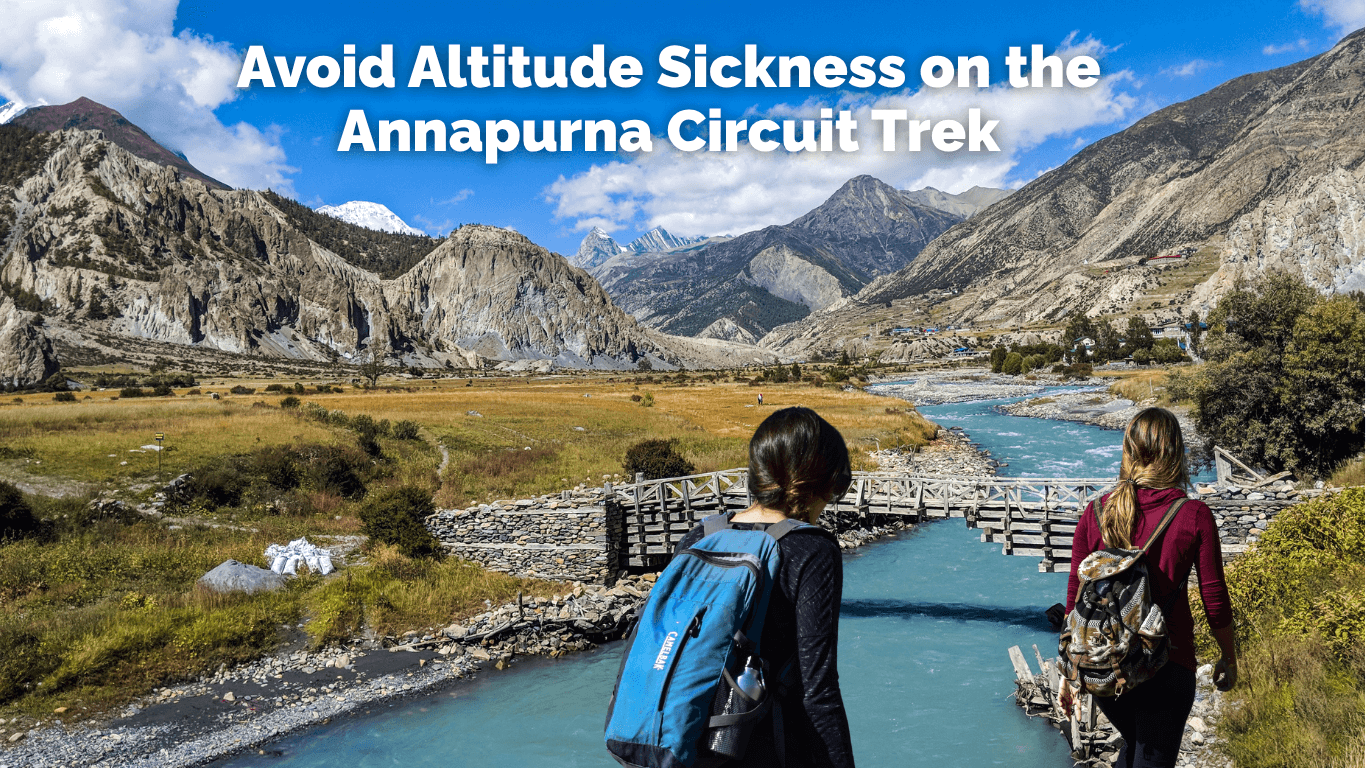Chances Of Altitude Sickness During Annapurna Circuit Trek

Many trekkers around the globe wonder what the chances of altitude sickness are on this world-famous Annapurna Circuit trek. The maximum altitude that you will reach on this trip is Thorong La Pass which is located at an altitude of 5416m. To reach such an altitude, trekkers need to face several challenges among them the most common one is altitude sickness.
Annapurna Circuit Trek has various routes and on average it takes 12 – 16 days depending upon the itinerary you choose. According to the Annapurna Circuit trek itinerary, the number of days that you acclimatize also varies. Therefore we suggest you choose the itinerary that has better acclimatization to avoid altitude sickness.
In this blog, we will discuss what altitude sickness and how to prevent altitude sickness, and what to do if you get altitude sickness during the Annapurna Circuit trek journey.
For booking the Annapurna Circuit trek package: Annapurna Circuit Trek – 15 Days
What is altitude sickness?
Before you join the Annapurna Circuit trek adventurous journey it is essential to understand what is altitude sickness. In a simple definition, altitude sickness is a condition where trekkers feel breathing difficulty due to the low level of oxygen present at high altitudes.
The higher altitude trekkers go the less oxygen level is present in the air.
The initial symptoms of altitude sickness which is also known as AMS (ACUTE MOUNTAIN SICKNESS) can be cured easily by following certain preventive measures. If the symptoms become worse then it will cause HAPE(HIGH-ALTITUDE PULMONARY EDEMA) and HACE (HIGH-ALTITUDE CEREBRAL EDEMA) which are intense forms of altitude sickness.

AMS Symptoms
- Headache
- Nausea
- Dizziness
- Loss of appetite
- Insomnia
- Unusual Swelling of hands, feet, and face
- Nose Bleeds
- A drop in performance
- A rapid increase in breathing
- Consistently increasing pulse rate
It’s preventive measures: Remedy
Gradual Ascent: Climb higher bit by bit at your own pace, giving your body time to get used to less oxygen.
Stay hydrated: Drink lots of water to avoid dehydration, which can make altitude sickness worse.
Get enough sleep: Make sure you rest well during your Annapurna circuit trek so your body can adjust to higher places.
Skip the booze and cigarettes: Alcohol and smoking can make it harder for your body to get enough oxygen, making altitude sickness more likely.
Medicines might help: Talk to a doctor about taking pills like acetazolamide (Diamox) before your trip to prevent altitude sickness. Trekkers need to understand that this medicine will not help after you get caught by altitude sickness.
Eat well: Have plenty of carbs, and some protein and fats too, to keep your body strong while you climb higher.
Read also: Latest Trekking Rules For Nepal – 2024/2025
Annapurna Circuit Altitude Sickness: Understanding the Risks
As we already know the highest point of the Annapurna circuit trek is Thorang la Pass(5416m). Altitude sickness can happen to anyone when we trek above the altitude of 3000m. Therefore there is a chance of altitude sickness on the Annapurna Circuit trek journey as we will be walking for several days above 3000m.

How to Avoid Altitude Sickness on the Annapurna Circuit Trek
There are short(6-8 days) Annapurna Circuit trek itineraries and standard (14-16 days) Annapurna Circuit trek you can find in the trekking agencies package. In a short trek, the acclimatization day is less and you will get less chance to adapt your body at high altitude. Whereas there are sufficient acclimatization days for trekkers in the standard Annapurna circuit trek itinerary.
Some trekking agencies will tell you that you to go for the short itinerary days for the low-cost Annapurna Circuit trek package. While seeing the low cost many trekkers choose to take a short itinerary trek which leads to altitude sickness and other health complications. Therefore the first thing that you should understand is before booking a trek read well about the itinerary days and acclimatization days.
Worth reading: Nepal Trekking Packing List
Annapurna Circuit Altitude Sickness: Tips for Safe Trekking
For a safe and comfortable trek make sure to follow all the preventive measures of altitude sickness. At Eco Nepal Trekkers, we prioritize the safety of our trekkers during the Annapurna Circuit Trek. We have crafted the Annapurna Circuit Trek – 15 Days where there are enough days for acclimatization to reduce altitude sickness and to make your trip more enjoyable and memorable.
Furthermore, trek with a registered licensed guide while embarking on the Annapurna Circuit trek. Your guide will help you in case of emergency as well and they will give nice tips and tricks for your help.
Always trek in a group which will help if anything goes wrong during the trip. Another important thing that every trekker must do is purchase travel insurance before joining this trek. You must have travel insurance before you leave your home country for the Annapurna Circuit trek because it is not possible to buy here in Nepal.
Lastly, we suggest you go for the Annapurna Circuit trek during the Spring and Autumn seasons, as they are the best times to visit. Trekking in the winter and monsoon is also possible but due to unstable weather conditions the chances of altitude sickness become high. If are planning to do it in winter and monsoon take extreme precautions and plan properly as the Annapurna Circuit trek is moderately challenging.
worth reading:
Guide and Porter Hiring for the Annapurna Circuit Trek
Best Time for Annapurna Circuit Trek
Frequently Asked Questions (FAQs)
What are the chances of altitude sickness during the Annapurna Circuit trek?
Annapurna circuit trek takes you to the maximum altitude of Thorang la Pass (5416m). The symptoms of altitude sickness can be seen while walking above 3000m for some trekkers. Therefore there are chances of altitude sickness during the Annapurna circuit trek as trekkers will be walking over 5,000 m.
What are the symptoms of altitude sickness?
The symptoms of altitude sickness are nausea, vomiting, headache, Insomnia, shortness of breathing, loss of appetite, nose bleeding etc.
How to manage altitude sickness of Annapurna Circuit trek?
During the trekking journey always follow preventive like ascending slowly, acclimatizing properly, avoiding smoking and alcohol, drinking enough water, eating healthy food, good sleep, etc.
What should trekkers do if they start experiencing symptoms of altitude sickness during the Annapurna Circuit trek?
If you experience the symptoms of altitude sickness during the Annapurna Circuit trek, inform your trekking guide immediately. Your guide will give you instructions on what to do next by monitoring your health condition, and determining whether you need to descend or arrange for evacuation.
How to book the Annapurna Circuit trek?
Before booking the Annapurna Circuit trek first read all the details of the trekking package that are provided. Check properly what is included or not including terms and conditions. Then after that, you can fill up the form and send us. If you need any assistance, you can reach us via email, WhatsApp, Viber, or IMO.
Email: [email protected]
Phone: +977-9813322433
When is the best time for the Annapurna Circuit trek?
The ideal time or best time to trek the Annapurna Circuit is during the month of the spring and the autumn season. During this month the clear view of the sky, moderate temperature for trekking, long sunlight hours, and predictable weather conditions most trekkers prefer to trek in this month.
Check also: Best Monsoon Trek In Nepal: Explore Trekking Destination
Final Say
Annapurna Circuit Trek is a famous trekking destination that you should visit once in your lifetime if you are a nature and mountain lover. Even though there are certain difficulties and challenges, with proper planning and preparation, it is always possible to overcome them.
Trekking in the Annapurna region and seeing the magnificent snow peak peaks of mountains like Annapurna, Dhaulagiri, Manaslu, Nilgiri, Pisang, Chulu, and many more is amazing. Also the beautiful landscape, lush hills, rivers, lakes, waterfalls, traditional village, and warm hospitality it worth it to visit.
So without thinking much join Eco Nepal Trekkers and let us handle everything from Annapurna Circuit trek permit, and guide to lodging and food. We will offer you great service at an affordable price. Your safety will be our top priority and we promise to make your trip more memorable. Book now!!!!

